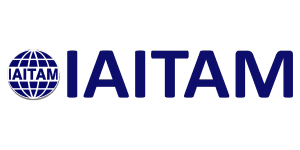Mobile Assets: Same Animal, Different Breed

I was recently asked, while discussing best practices for managing hardware assets during their lifecycle, “How do smartphones fit here? Are they harder to manage? Are there additional best practices for managing that hardware asset type?”. The short answer is it depends, laptops and desktops, depends… There is no “one size fits all” in ITAM, and yes, there are best practices that relate specifically to mobile assets, their services, and policies that govern their use.
As a rule, the management of your organization’s mobile assets must be treated with the same due diligence as the management of its hardware assets, with a few added criteria. After all, mobile assets ARE hardware assets, just of a specialized nature. We can relate hardware assets to animals in this way. Labradors, Huskies, Poodles, and Pit Bull Terriers are all dogs, each breed has its own “job” that it was bred for and its own temperament. Desktops, laptops, smart phones, tablets, and wearables are all hardware, but each device type has its own specialized functionality, benefits, and disadvantages for its use in our IT environments. And just like a Husky isn’t a great choice of pet for a physically inactive human, mobile devices might not be the best choice for assets that manipulate, transmit, or store confidential level organization or customer information.
A HAM might say that due to their historical incompatibility with traditional discovery tools, unique service, security, and organizational policy considerations that need to be made for the acquisition and use of mobile devices, and necessary Vendor and Service Management elements necessary to ensure functionality, these devices are more complex and difficult to manage than a traditional desktop or laptop. Mobile Best Practices from a hardware standpoint include ensuring that you have a Discovery Tool robust enough to discover your assets, even when they are not physically in your office location, selecting a tagging and tracking method that meets your organization’s needs based on asset type, and working to communicate with and educate other teams, such as Procurement, Security, SAM, Disposition, etc. to ensure the right information is being captured about the assets and the program in order to empower future strategic decisions to be made about the acquisition and use of these assets.
On the other hand, a SAM would probably say that mobile assets are easier to manage than traditional hardware, due to the nature of application licensing. Typically, a new current version of the software license is automatically received with each new install and version update, so it’s essentially impossible to be out of compliance with your mobile application license as long as your Documentation Management KPA is mature and there are policies and procedures in place to ensure the proper downloading and updating of organization approved software applications. The Best Practice from a software and data standpoint is to ensure the devices are logged into the cloud and the application store with an organization owned user ID. Do not allow employees to use their personal accounts to download apps, upload information, or store device backups. By taking control of mobile accounts, you can ensure that no unapproved applications are installed, that all applications are updated in a timely manner with license information delivered to ITAM and updated in the repository, and that in the event of a lost or stolen device the organization’s data can be wiped quickly, efficiently, and completely.
Because of the inherent nature of these devices, mobility is a little more complex than traditional hardware or software asset management. Mobile assets are a mix of hardware and software with a touch of service management thrown in. For this reason, IAITAM recommends designating the role of Mobile Asset Manager. This individual should be someone with Hardware Asset Management experience that is also equipped with the knowledge and skills necessary to handle the various caveats of a mobile IT environment. To learn more about Mobility Best Practices and develop the skillset necessary to proactively manage your mobile assets, I highly recommend our CMAM Certification Course. It’s being offered in person this May at ACE! Make sure you sign up soon before all the seats are filled!
